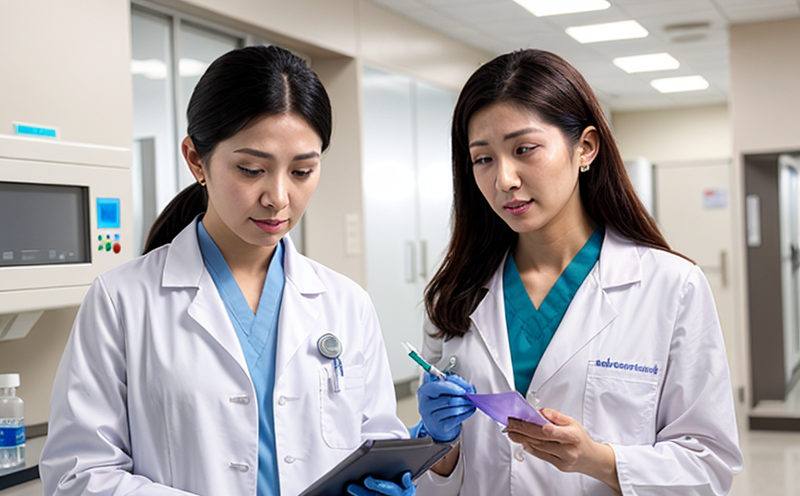EP Potency Testing by Cell Based Assays
The European Pharmacopoeia (EP) potency testing using cell-based assays is a critical method in pharmaceutical quality assurance. This assay evaluates the efficacy and consistency of biopharmaceuticals, biosimilars, and other complex biological products through standardized methods. The goal is to ensure that each batch meets stringent regulatory standards and performs as expected.
The process begins with selecting an appropriate cell line, which should be compatible with the substance being tested. Cells are then exposed to varying concentrations of the biopharmaceutical or biosimilar under controlled conditions. By monitoring cellular responses such as proliferation, survival rates, or signaling pathways activation, we can determine the potency.
One key advantage of this approach is its ability to mimic in vivo scenarios more accurately than traditional methods like chemical assays. This makes cell-based assays particularly valuable for assessing complex biologic drugs that interact with specific receptors or signal transduction pathways. Another benefit lies in their precision; modern techniques allow us to measure minute changes in cellular behavior, providing high-resolution data.
Standard operating procedures (SOPs) must comply strictly with Good Laboratory Practices (GLP), ensuring all tests are conducted under strict quality controls. Compliance officers play a crucial role here by reviewing protocols and validating methods against relevant guidelines such as ISO 17025 or ICH Q7A.
For R&D engineers, this service offers valuable insights into product performance early in development stages. They can use the results to refine formulations or optimize manufacturing processes based on empirical evidence rather than theoretical models alone.
- Customer Impact: Enhanced confidence in regulatory submissions; improved chances of market approval; reduced risk of recalls due to non-compliance issues.
- Satisfaction: Faster turnaround times for potency testing; consistent results across batches; lower variability between assays performed by different laboratories.
The importance of accurate potency measurements cannot be overstated. Even small discrepancies could lead to significant safety concerns or efficacy failures during clinical trials and post-market surveillance.
Scope and Methodology
EP potency testing via cell-based assays encompasses a wide array of applications within the pharmaceutical industry, particularly focusing on biopharmaceuticals and biosimilars. These tests are designed to evaluate the active substance's biological activity directly rather than relying solely on chemical properties.
The methodology involves several steps starting from sample preparation through assay execution up until final result interpretation:
- Sample Preparation: Ensuring samples are stable and free from contaminants is paramount. This includes dilution, standardization, and ensuring homogeneity before introduction into the cell culture.
- Culture Setup: Selecting appropriate cell lines that respond predictably to the substance under investigation ensures reliable results. Conditions such as temperature, humidity, and light exposure are meticulously controlled during this phase.
- Dose Response Curve: Varying concentrations of the test article are added to the cultures over time. Changes in cellular parameters are recorded at intervals throughout incubation periods.
- Data Analysis: Statistical tools help interpret raw data, providing robust evidence regarding potency levels.
The use of advanced analytical equipment like flow cytometers or fluorescence plate readers enhances accuracy further by quantifying specific biomarkers indicative of cellular responses.
This comprehensive approach ensures that each batch undergoes thorough evaluation ensuring compliance with regulatory requirements while also supporting scientific advancements in the field.
Use Cases and Application Examples
In the realm of biopharmaceuticals and biosimilars development, EP potency testing by cell-based assays plays a pivotal role. One common application involves ensuring consistency across manufacturing batches. By regularly assessing potency post-production, companies can identify any deviations early enough to implement corrective actions.
Beyond just batch release, this service also supports clinical trial design. Clinical researchers rely on accurate potency data when selecting appropriate dose levels for trials. It helps in understanding how variations in formulation might affect outcomes, thereby guiding safer and more effective treatments.
For quality assurance departments, these tests serve as an indispensable tool in maintaining high standards throughout the supply chain. Regular audits using cell-based assays reassure stakeholders about ongoing compliance with regulatory expectations.
An illustrative example comes from a multinational pharma company that adopted this service for all its new biologic launches. The resulting increase in market acceptance and successful regulatory approvals underscored the value of rigorous potency testing.





